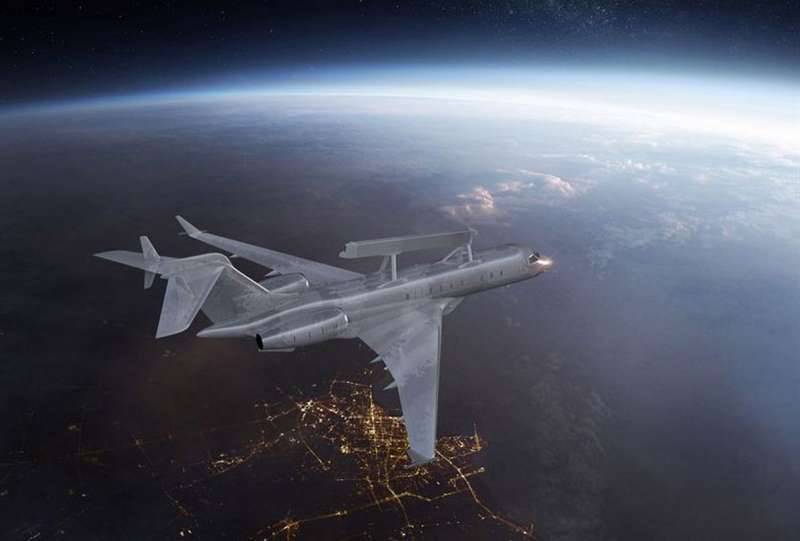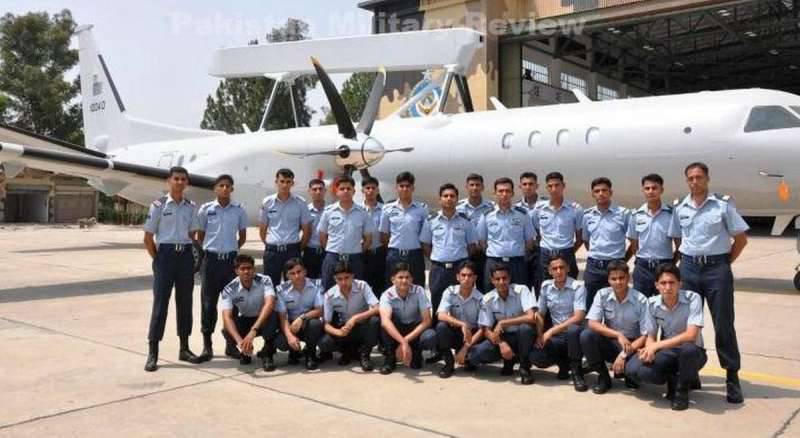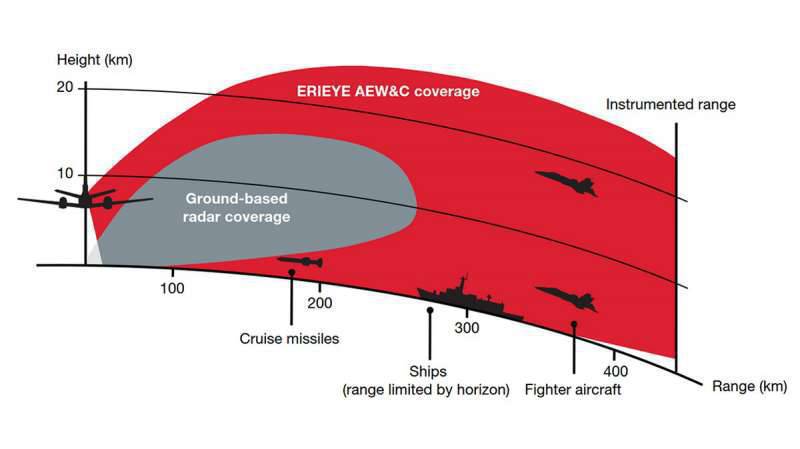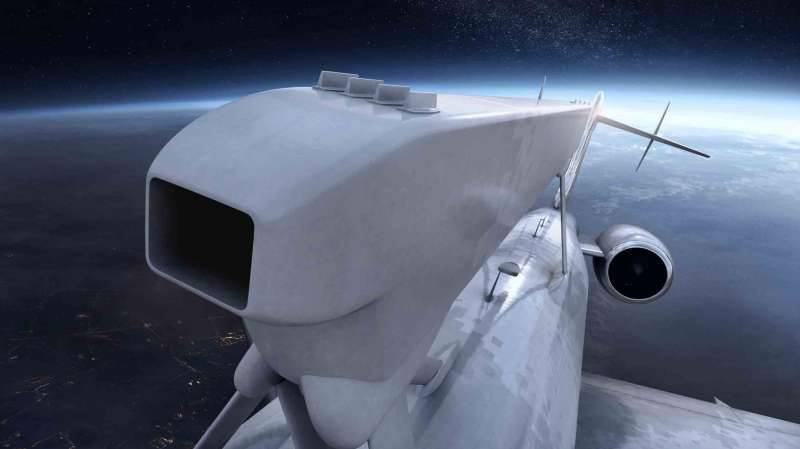Opinion "Saab" on counterproductive stealth aviation in terms of the use of new DRLO aircraft erroneously
A FEW MYTHS ABOUT RADIO
Huge disagreements are accompanied by any disputes of military experts regarding the effectiveness of the use of stealth aircraft and tactical aircraft at a modern theater of operations filled with a wide variety of radar systems, among which aviation DRLO complexes, and ground-based surveillance / multifunctional radars of the air defense system, and radar of the radio engineering troops.
But the greatest number of myths, of course, were given to meter-range radars, which, according to some "experts", are capable of detecting unobtrusive tactical aircraft at a distance of 100 and more than kilometers. Curiously, this information is absolutely not supported by any scientific theories of radar systems, but is explained only by a single case of intercepting the American F-117A "Nighthawk" anti-aircraft guided missile 5В27D of the Yugoslav S-125 "Neva" air defense missile, the division of which, apparently, could not be Joe. the detectors of the meter range P-12 "Yenisei" and P-18 "Terek". But these radars are absolutely not involved in the radio command guidance of 5B27D missiles at the target, but only carry out a review of the airspace and target designation for the X-band SNR-125, which is also involved in accurate targeting of missiles to the target. It is also assumed that the guidance of the missile during the interception of "Nighthook" could be made according to the data of the Phillips thermal sighting system, which was mentioned by the commander of the 3 battery Zlotan Dani. This version is closest to reality, because the pilot Dale Zelko said that the plane was intercepted immediately after departure from the lower edge of dense clouds: initially the plane was accompanied by П-12 / 18 and СНР-125, and the thermal imaging system also received target designation.
According to the report on the destruction of the aircraft, compiled by the deputy commander of the battery, Lieutenant Colonel George Anicic, F-117A first appeared on the indicators of the Neva operators at a distance of 23 km, which corresponds to the target detection range with the EPR about 0,1 m 2 (F-117A) station SNR -125. Meter radars do not show any “super-abilities” for detecting small-sized targets, since the meter-range waves, like decimeter and centimeter, have an equal reflection coefficient from objects that have larger dimensions than the wavelength. Remember: the extra-small balls released during the experiment from the American Shuttle were detected by the centimeter multifunctional radar complex Don-2Н.
But, in addition to the empty debates of observers on the capabilities of various frequency ranges of military radar, about which almost everything is known and logically clear, even the representations of some eminent companies and corporations are beginning to surprise with all sorts of “pearls” regarding a possible change in the concept of military equipment of the new generation to advertise their “top-down” projects or programs.
REAL OPPORTUNITIES OF THE SWEDISH CONCEPT OF RADAR DOSOR AND GUIDANCE
So, the company "Saab", working on the project of a promising multipurpose surveillance aircraft / AWACS "GlobalEye AEW & C", hastened to declare that due to the increased detection range of its radar complex, the new operational-tactical situation in the air will lead to a loss of interest in the development of stealth technology from leading manufacturers of tactical and strategic combat aircraft. The statement is quite bold, but does the new project from Saab match it?
The S-88 developed on the basis of the American SA.227AC Metro III, which is located in the Swedish Air Force as a short-range passenger aircraft for delivering small cargoes of special purpose and accommodating commanders, became the firstborn among the experimental airplanes of the AWACS for the Swedish Air Force. Radar with 2-sided AFAR FSR-890 produced by Ericsson was installed on the upper outer part of the fuselage on special supports. The fixed radome radome is located along the fuselage, which practically does not increase the area of the mid-section, and, accordingly, the aerodynamic resistance is much less than that of the DRLO aircraft with a rotating E-3C radome. Radar FSR-890, by the standards of technology 1991, had excellent performance characteristics, allowing you to detect a target of the type "F-16" at a distance of 300 km. The Swedish Air Force is guided by the concept of basing the BAS 90 aircraft, according to which the aircraft can be promptly deployed on unprepared runways and platforms in the most diverse and little-known places of the state, which in combat with the TFR can sustain a large part of the air force fleet . Initially, the BAS 90 concept was adjusted to the tactics of using Gripen fighter jets, but some of its details migrated to reconnaissance aircraft, in particular, to DRLO airplanes, due to which all airborne radar systems are based on compact aircraft of type SA .227AC Metro III, EMB-145 or S-100B Argus.
The latest development of the Swedish "Saab" - observation aircraft / DRLO, developed on the basis of the Canadian long-range administrative aircraft Bombardier Global Express 6000. The machine is created by order of the UAE Air Force, decorated at the end of 2015 year. The new “stratospheric observer”, despite its moderate size for RLDN aircraft, will receive a lot of technological bells and whistles and “advantages”.
First, the aircraft will have a huge range, in 5 — 6 thousand km, and the maximum speed will be 900 km / h. This will allow you to quickly get to the theater and quickly start duty. At a distance of 4000 km from the take-off location, this aircraft will be able to carry out duty for 8 hours at a speed of 500 km / h, which is approximately 2 times higher than that of E-3C; and all this without refueling. Naturally, the car can be equipped with a refueling unit, which will further increase the range and time of flight.
Secondly, "GlobalEye AEW & C" (MSA, multirole surveillance aircraft, the name of the concept is "Saab") is able to conduct duty at an altitude of 15,5 km, which is already an important advantage among aircraft of this type, since the radio horizon significantly increases both in the air and for radio-emitting ground targets. This allows you to stay at a greater distance from the theater of operations.
Thirdly, the new multi-mode Erieye ER radar with AFAR has a 2 times higher radiation power of each APM antenna array, as well as an increased sensitivity of their receiving channel, which increased the detection range of typical air targets of the "fighter" type by about 80% (about 780 km). This radar is an improved version of the FSR-890 "Ericsson Erieye" and operates at a frequency of about 3,2 GHz decimeter S-band, which indicates the technical feasibility of implementing the target designation mode for missiles and air-to-air missiles with active radar seeker launched from other air or sea / land carriers. It is worth noting that the "Erieye ER", thanks to the S-band, has better accuracy in determining the coordinates of the target in comparison with such stationary radars as MESA (installed on Turkish aircraft AWACS Boeing 737AEW & C "Peace Eagle"). Developed by Northrop Grumman, MESA operates in the L-band at a lower frequency (approximately 1,5 GHz) with a wavelength of 15-30 cm, which affects accuracy.
Erickson's "Erieye ER" also has a drawback: in the front hemisphere (PHS) and the rear hemisphere (RPS) there are 2 "blind zones" with a spatial angle of 60 degrees, they are not covered by the solid angle of the antenna arrays. But given the almost 1,8 times greater detection range, this drawback can be easily compensated for by a periodic smooth change in the course direction within +/- 30 degrees. But can this advanced AWACS and U aircraft lead to a decrease in customer interest in stealth fighters and VTOs only due to its high detection range?
Imagine a hypothetical theater of military operations, which uses the Saab airborne DRLO with the Erieye ER radar, the super-maneuverable multi-role Su-30CM tactical fighters (as representatives of the 4 ++ generation) and the inconspicuous T-50 PAK FA. “Thirties”, hung with various rocket precision weapons at external points of the suspension, will have an EPR to 7-10 м2, and therefore will be detected by “Erieye ER” at maximum distances over 750 km. In this case, the Khibiny EW complex, although it will create the most serious problems with detection for the DRLO aircraft, the main task, to hide the fact of its presence in the airspace of the theater, will not be performed, because the part of the space where the radioelectronic interference. Ground or naval air defense / missile defense systems will be immediately notified to the rocket-hazardous direction. As a result, they can manage to deploy in advance multifunctional radars of the air defense system in this direction, which will reduce the response time and increase the chances of a more successful reflection of the strike.
The use of T-50 PAK-FA will be completely different tactics. The perspective aviation complex of the 5 generation, regardless of the range of weapons in the internal compartments, has an EPR within 0,2 m 2 (according to official data). The plane absolutely does not need to use the REB complex until it is detected by enemy radar equipment. Radar "Erieye ER" can detect T-50 at a distance of no more than 200 - 250 km. Agree that the 3-multiple difference in detection range between 4-th and 5-th generation machines is a huge tactical advantage for the latter. From a distance of 245 km, the PAK-FA can launch 4-flywheel anti-radar X-58USHKE missiles, and from 285 km - long-range tactical cruise missiles of the X-59MK2 type, which also have a pronounced stealth design (square section of the hull and fairing). composites). T-50 will be able to launch the WTO from minimum distances, imperceptibly for the enemy's AWACS, the approach of which will be known only when the missiles approach 100 - 150 km. With massive use of the latter, the enemy will not get a chance to successfully repel a missile strike, since the flying time will be a few minutes. With the use of aviation 4-generation, this time can be tens of minutes.
It is for this reason that all of the aforementioned Saab statements about the futility of stealth aircraft are nothing more than an ill-conceived PR move to advertise a new AWACS aircraft, also known as GlobalEye AEW & C.




Information